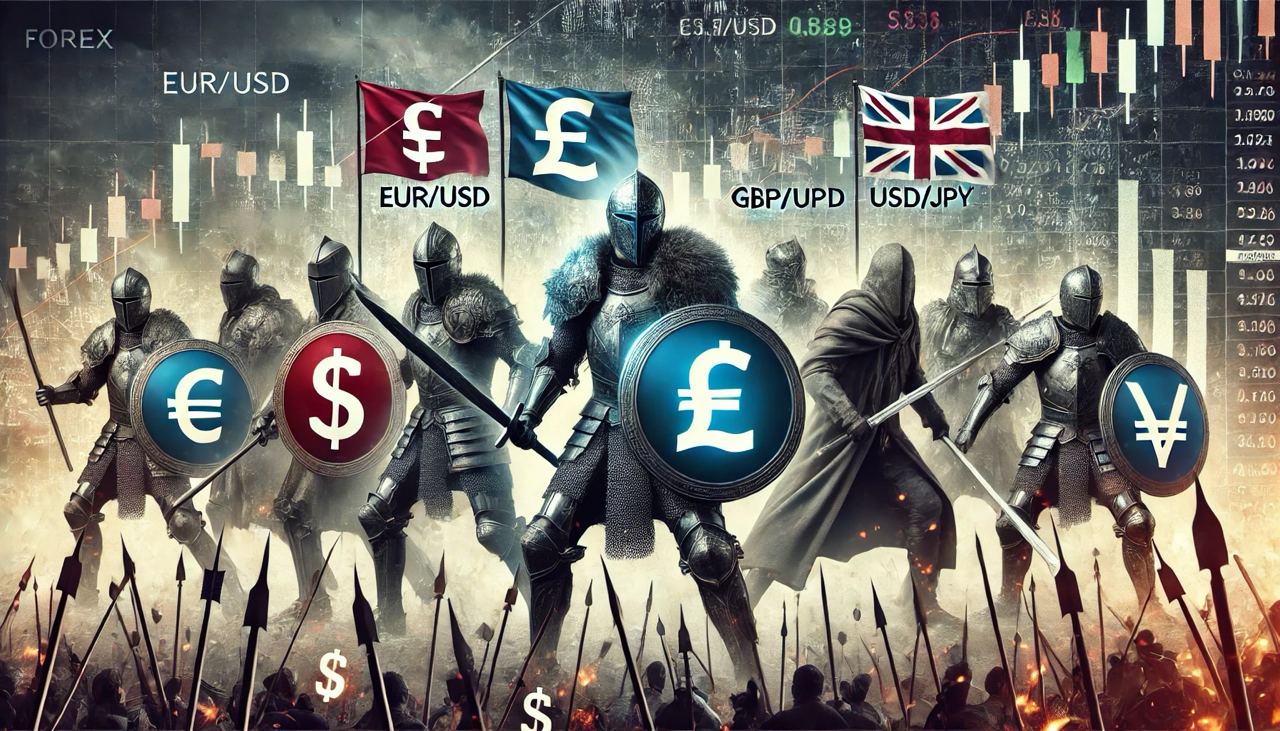Обучение трейдингу бесплатно и без регистрации
Онлайн-словарь чтобы изучать трейдинг самостоятельно
Cross rate of the dollar with other currency pairs
Currency Crosses: Hidden Opportunities and Their Impact

Imagine the Federal Reserve announces an interest rate hike. Predictably, this news sparks a surge in demand for the US dollar as investors scramble to buy it, strengthening its position against other major currencies.
What happens next?
•EUR/USD and GBP/USD pairs drop.
•USD/CHF and USD/JPY pairs soar.
If you had a short position on EUR/USD, the favorable movement would make you happy, earning you a few pips. But before celebrating, you notice your friend, trading EUR/JPY, made significantly more pips!
Why Did Your Trade Perform Less Profitably?
Upon comparing the charts, you discover that USD/JPY surged far more significantly, breaking key resistance levels and gaining 200 pips, while EUR/USD barely moved 100 pips, stopping at a significant support level.
What’s going on?
The answer lies in the dynamics of currency crosses, particularly the EUR/JPY pair.
The Role of Currency Crosses in Shaping Market Dynamics
When USD/JPY breaks a key resistance level, it attracts traders’ attention, increasing trading volumes. Lower holding costs and massive buying create strong pressure on the yen, prompting EUR/JPY to surge.
This rally draws more market participants to buy, amplifying the upward movement. As the euro strengthens against the yen, the decline in EUR/USD slows down.
How Currency Crosses Cushion Market Volatility
In this case, the rise in EUR/JPY acts as a “parachute” for EUR/USD. Buying the cross compensates for the pressure on the euro caused by the global demand for the US dollar, making EUR/USD movements smoother compared to the sharp fluctuations in USD/JPY.
This demonstrates how currency crosses influence major pairs, even if you’re not trading them directly.
What Does This Mean for Traders?
Even if you focus exclusively on major pairs, ignoring currency crosses is a mistake. They shape the global picture of market movements and can provide critical insights:
1.Understanding overall market dynamics.
Crosses can reveal the weakness or strength of individual currencies, helping you adjust your strategies for major pairs.
2.Identifying trends.
Currency crosses often display clearer trends than major pairs since they are less impacted by short-term fluctuations involving the US dollar.
3.Expanding trading opportunities.
Trading crosses allows you to explore beyond the predictable scenarios offered by major pairs, uncovering more profitable trades.
Additional Tips
•Monitor correlations. Analyzing crosses like EUR/JPY can help you better understand movements in major pairs.
•Use crosses for hedging. When opening positions on major pairs, use crosses to reduce risks.
•Study fundamental factors. News and economic data affecting crosses often provide early indications of movements in major pairs.
Conclusion
Trading major currency pairs without considering the influence of crosses limits your potential. By incorporating cross analysis into your trading strategy, you can make more informed decisions, uncover hidden opportunities, and minimize risks.
Trading currency crosses isn’t just an add-on—it’s a vital tool for anyone aiming to succeed in the financial markets. Don’t miss the chance to leverage it to the fullest! 🚀


